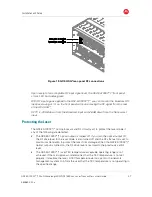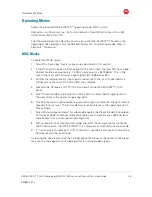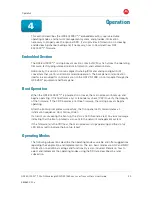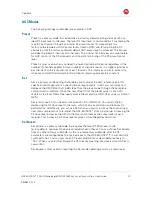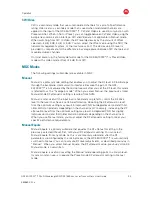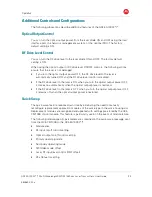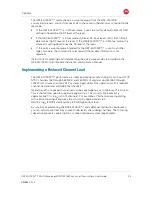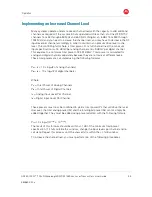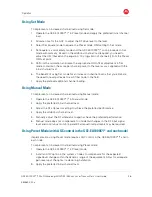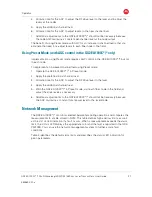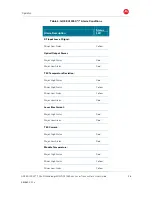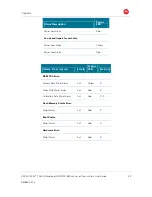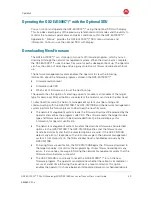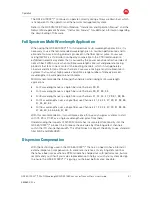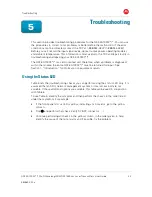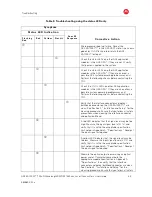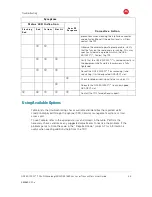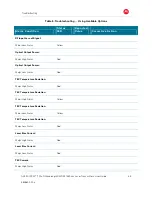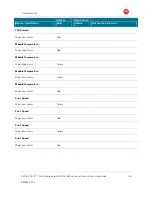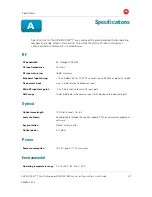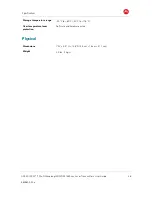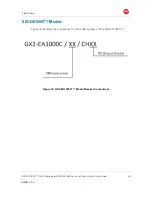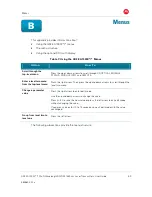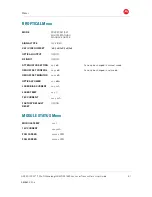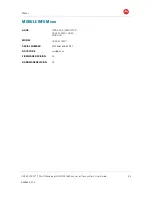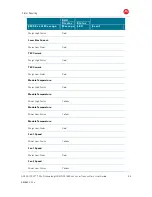
Operation
B
GX2 EA1000C*/* Multi-Wavelength DWDM 1550 nm Laser Transmitter
•
User Guide
41
589569-001-a
The GX2-EA1000C*/* continues to operate normally during a firmware download, which
is transparent to the operator and the network management system.
Refer to the GX2-CM100B Control Module, “Installation and Operation Manual” and the
Network Management System, “Instruction Manual” for additional information regarding
the downloading of firmware.
Full Spectrum Multi-Wavelength Application
When using the GX2-EA1000C*/* for full spectrum multi-wavelength applications, it is
necessary to use the recommended wavelength plan to maintain performance and to
eliminate four-wave mixing products produced in the fiber optical cable. Four-wave
mixing (FWM) is a third order non-linearity comparable to the CTB intermodulation
exhibited in electrical systems that is caused by the power sensitive refractive index of
optical fiber. FWM occurs when multiple wavelengths interact and generate mixing
products that fall at one or more of the existing channels, which in turn generates
crosstalk and distortion at those channels. Four-wave mixing is most troublesome in
systems that launch at high powers and utilize a large number of densely packed
wavelengths in low dispersion environments.
Motorola recommends the following channel plan when doing multi-wavelength
applications:
•
For 2 wavelengths over a single fiber use Channels 29, 31
•
For 4 wavelengths over a single fiber use Channels 29, 31, 33, 35
•
For 8 wavelengths over a single fiber use Channels 21, 22, 24, 27, 29, 31, 33, 35
•
For 12 wavelengths over a single fiber use Channels 21, 22, 24, 27, 29, 31, 33, 35,
41, 45, 50, 54
•
For 16 wavelengths over a single fiber use Channels 21, 22, 24, 27, 29, 31, 33, 35,
41, 45, 50, 54, 55, 56, 57, 59
With this recommendation, it would make sense for pay-as-you grow systems to start
with Ch 29 or Ch 31 as a single wavelength and grow from there.
Understanding the impacts of FWM, Motorola has incorporated functionality into the
GX2-EA1000C*/* product line to reduce these issues by offsetting select channels
within the ITU channel bandwidth. This offset does not impact the ability to use standard
filter MUX and DEMUXES.
Dispersion Compensation
With the technology used in the GX2-EA1000C*/* there is no need to have internal or
external dispersion compensation. In some rare instances of very long distance links
there have been cases where a DCM module has helped out with performance, but we
recommend you consult your sales representative to help you with your system design
to ensure the GX2-EA1000C*/* is giving you the best performance possible.

